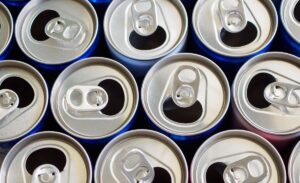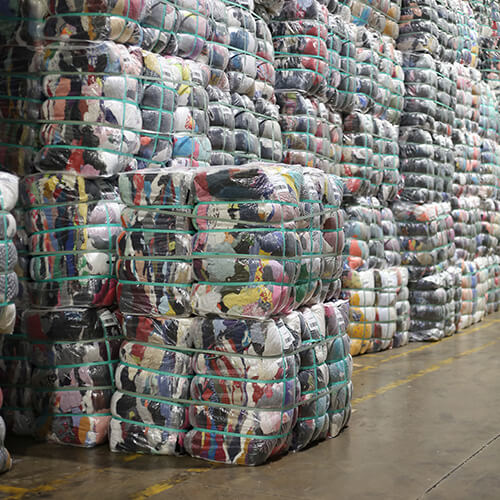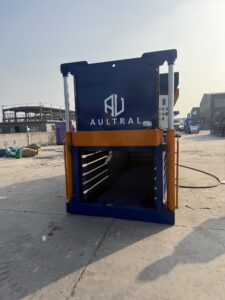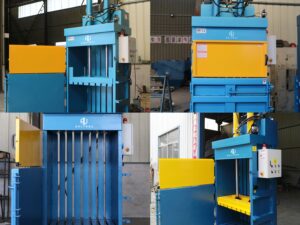In the modern waste recycling industry, transportation costs are a critical factor affecting profitability. Recyclable materials such as waste paper, plastic, and metal are typically bulky and low-density, making direct transportation inefficient and expensive. Balers (also known as compactors or baling machines) use high-pressure compression technology to compact loose materials into dense blocks, significantly reducing volume and optimizing logistics efficiency. This article explores how balers work, their applications in different recycling sectors, and how compression technology drastically cuts transportation costs.
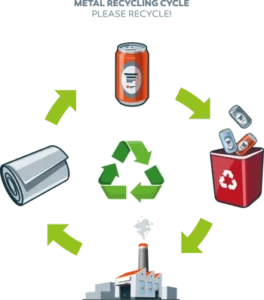
1. How Balers Work and Their Types
Balers apply hydraulic or mechanical pressure to compress loose materials into tightly packed bales, making them easier to store and transport. Depending on the compression method and material type, balers can be categorized as follows:
(1) Hydraulic Balers
-
Use high-pressure hydraulic systems, suitable for paper, plastic film, and metal scrap.
-
Compression force ranges from tens to hundreds of tons, with high compression ratios (up to 5:1 or more).
(2) Mechanical Balers
-
Utilize screw or crank mechanisms, ideal for small to medium-sized recycling facilities.
-
Lower energy consumption but generally offer less compression force than hydraulic models.
(3) Metal-Specific Balers
-
Designed for metal scraps (e.g., steel, aluminum cans, copper wires) with ultra-high pressure (200+ tons).
-
Some models include shearing functions to cut and compress long metal waste simultaneously.
2. How Balers Reduce Transportation Costs?
Transportation costs depend primarily on load capacity, number of trips, and fuel consumption. Balers optimize these factors through:
(1) Dramatic Volume Reduction
Loose waste paper, plastic bottles, and metal scraps occupy excessive space. For example:
-
Cardboard: 1 ton of loose waste paper may occupy ~10 m³, but after baling, it reduces to 2-3 m³ (5:1 compression ratio).
-
Plastic Bottles: Uncompressed PET bottles take up 70% more space than baled ones.
-
Metal Scrap: Loose aluminum cans are highly inefficient to transport, but baling increases load capacity by 3-5x.
Case Study: A paper recycling plant using a 200-ton hydraulic baler increased truckload capacity from 5 to 20 tons, cutting transport costs by 60%.
(2) Improved Truck Loading Efficiency
-
Loose materials create air gaps, while uniform bales allow tight stacking, maximizing container space.
-
Example: A 40-ft container may hold only 5 tons of loose plastic but 15-20 tons when baled.
(3) Fewer Trips Required
-
Higher load capacity per trip reduces the number of journeys, saving fuel, labor, and vehicle maintenance costs.
-
Example: A scrap metal yard reduced daily trips from 10 to 3 after baling, saving over $70,000 annually.
(4) Reduced Material Loss During Transit
-
Loose materials (e.g., plastic film) can scatter, while baled materials stay intact, minimizing loss and pollution.
-
Baled metal resists oxidation, improving recycling quality.
3. Applications in Different Recycling Streams
(1) Paper Recycling
-
Challenge: Cardboard and newspapers are lightweight but bulky.
-
Solution: Balers compress paper to 1/5th of its original volume, boosting transport efficiency by 300%+.
-
Case Study: A paper company reduced annual transport costs by 40% and warehouse space needs by 50%.
(2) Plastic Recycling
-
Challenge: PET bottles and plastic films are voluminous but light.
-
Solution: Plastic balers compress material to 1/10th its size while removing moisture/contaminants.
-
Case Study: A European recycler cut plastic transport costs from €200/ton to €80/ton.
(3) Metal Recycling
-
Challenge: Irregularly shaped scrap metal (e.g., car bodies) is hard to load.
-
Solution: Metal balers compress and shear long scraps, increasing density 4x.
-
Case Study: A scrap yard improved transport efficiency by 400% and reduced loading time.
4. Economic Benefits Analysis
For a mid-sized recycling business:
| Metric | Without Baler | With Baler |
|---|---|---|
| Annual Volume | 10,000 tons | 10,000 tons |
| Load per Truck | 5 tons | 20 tons |
| Annual Trips | 2,000 | 500 |
| Cost per Trip | $500 | $500 |
| Annual Transport Cost | $1,000,000 | $250,000 |
| Annual Savings | — | $750,000 |
Additionally, baled materials fetch higher market prices (e.g., compressed steel scrap sells for 10-15% more).
5. Future Trends
-
Smart Baling Systems: AI and IoT integration for auto-adjustment and predictive maintenance.
-
Eco-Friendly Balers: Electric and solar-powered models to reduce carbon footprint.
-
Higher Compression Tech: Ultra-high-pressure balers for further volume reduction.
Conclusion
Balers play a vital role in paper, plastic, and metal recycling by drastically cutting transportation costs through high-efficiency compression. As environmental regulations tighten and circular economies grow, investing in advanced baling technology will become a competitive edge—reducing operational expenses, improving resource recovery, and supporting sustainability.

